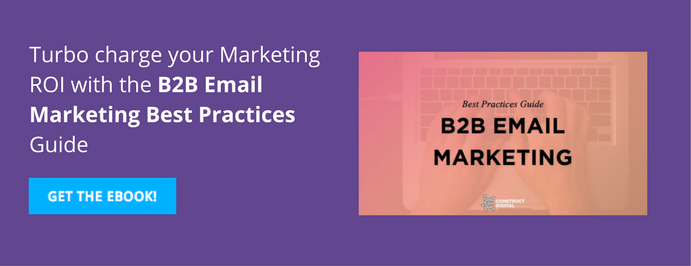In our digital world, no space can be more personal than our email inbox. Here, you can determine who gets in or is booted out. Majority of your information sits here (Letter of Offer? Check. Tenancy agreement from your landlady? Check.). Unless you’ve assigned Facebook Messenger to be the keeper of your documents, your email inbox pretty much holds everything.
That's why email marketing has become such a coveted tool for marketers. These statistics prove it:
- McKinsey reports that "email is 40 times more effective at acquiring new customers than Facebook or Twitter."
- ExactTarget shows that for every $1 spent on email marketing, $44 of revenue is generated.
But is it enough to just dive right in? To harness the power of email marketing, you have to remember one important word: Permission.
Permission Marketing is The New Black (And It's Nicer Too!)
The term "permission marketing" was coined by Seth Godin to define the strategy of creating anticipated, personalised and relevant messages for people who want to receive them. Permission marketing is one way to show that you genuinely value your audience’s personal time and space.
By asking their permission, you are slowly but surely creating avenues to get their trust, which is key to nurturing your relationship with them.
This is specially important for B2B marketers whose primary role is to educate their audience first before making any sales pitch. But what does it have to do with email marketing?
As it turns out, you’ll need their permission to send good stuff to their emails.
Visit our service page to see how we do this for you.
Finally Getting Permission to Land On Their Inbox
At the beginning of this blog post, we talked about how personal the email is—surely, you just can't barrel your way through anyone's inbox without getting the necessary consent. There's a reason you need to get permission before adding a contact to an email list: Permission-based emails enjoy better open and click-through rates.
So, how will you obtain it?
According to Campaign Monitor, "permission is granted when somebody specifically gives you permission to send them email campaigns, likely by entering their email address in a subscribe form on your website, or entering their details into your in-store newsletter subscribe form."
You can also get it via landing pages and lead magnets.
A lead magnet could be an ebook, a report, or a downloadable template—anything that helps your visitors get better business results. You will need a landing page to house this lead magnet. In exchange for the lead magnet, visitors will provide name, job title, and their coveted email address.
Now that you’ve gotten their email address (and permission), it's important to honour the trust they've given you. Refrain from spamming their inbox and send them only what they want. They have asked for your lead magnet, you give it.

Beyond Permission Marketing: Marketing Automation & Lead Scoring
Not everyone who leaves information in exchange for your lead magnet will convert into customers. Sometimes, the transaction stops the moment they get your lead magnet.
What you need to do is focus only on the most interested of leads. Do this through lead scoring—a method used to assign a value to your leads—which is made possible by marketing automation.
Using software platforms to automate repetitive marketing tasks, marketing automation can help you determine in greater detail the level of your lead’s interaction with your business. Once your lead achieves a particular score, this tells your sales team to hop on a call with him, so they can fully explore his pain point and identify the best solution.
Marketing automation allows you to go beyond capturing emails, move to a qualifying process promoting contacts into leads, and arrive at a point where you or your sales team can finally go in for the sell. We can't emphasise enough how wonderful it is (we rave about its merits here).
Read: How Our Client Grew Their Contact List by 1,700% with Marketing Automation
Now...Get to Work!
Having scored your prospects' permission and turned them to leads and customers, what's next?
Keep teaming up with your sales team. Empower each other to send the right message to your target audience. Remember: Having common sales and marketing goals will boost your research, enable effective lead capture, and guide your marketing automation—which are, essentially, keys to a successful email marketing campaign.
Lastly, don't ever abuse your leads' and customers' trust. Give them space, get their permission. Rinse, repeat...and watch your revenues grow.

Image sources and credits:
Header image: One Photo @ Dreamstime
Body image: One Photo @ Dreamstime